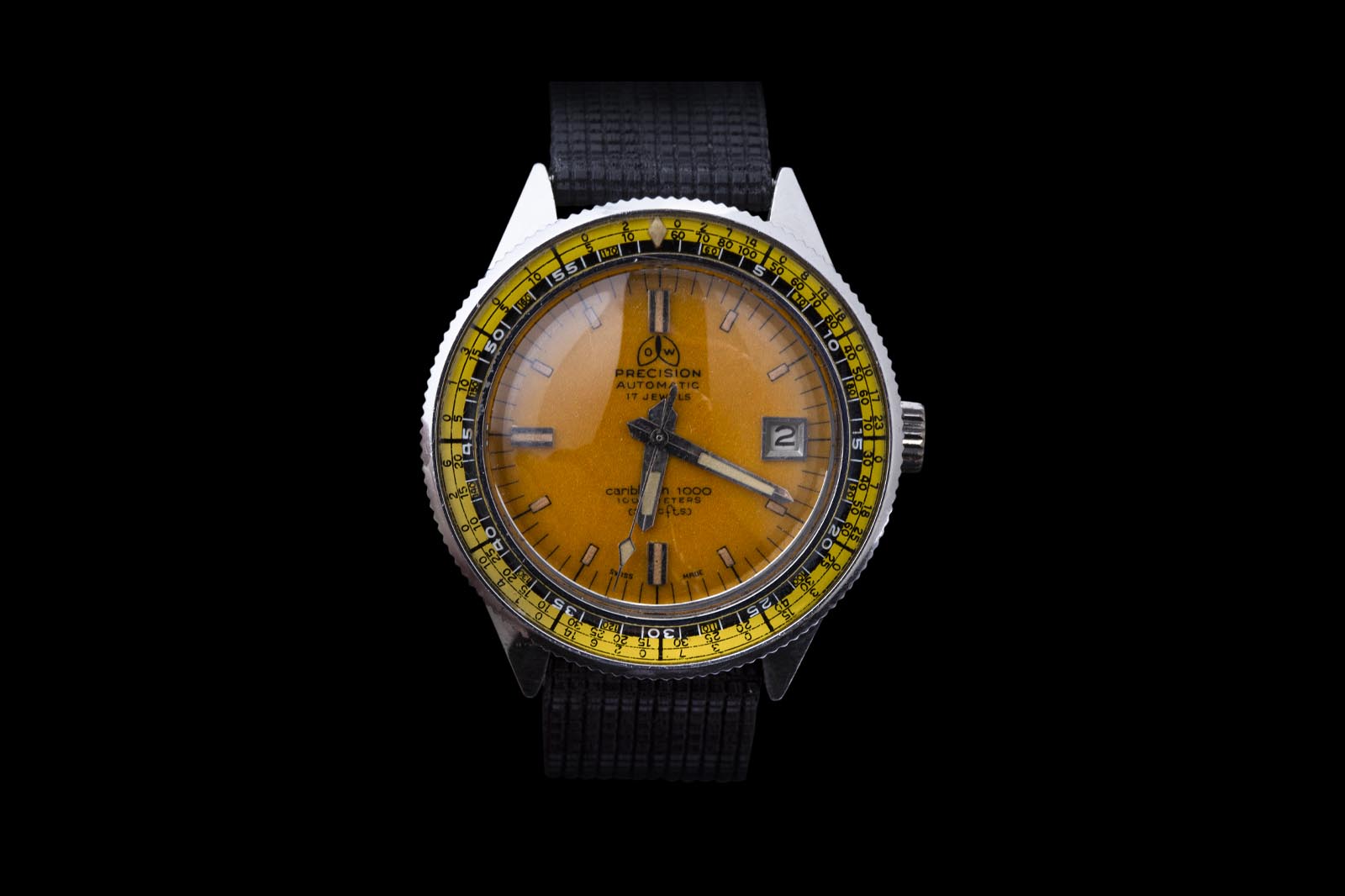
When I was given the Ollech & Wajs Caribbean 1000 as my next article subject, the watch was described to me as ‘cool.’ Apparently, the word emerged in the US in the 1930s, and became well, really cool, in the 1950s. But what makes something cool, and could we all agree on what a cool watch actually is?
My conclusion is a satisfying one: some of the coolest watches of all time are dive watches (and we should all agree on this). They are cool in their understated, dark and moody beauty, like the bad boy in the leather jacket, and with every component intrinsically related to purpose, these are handsome watches with a job to do. They enable you to do yours – keeping you alive as you disappear into the depths.
Rolex, among many other brands, had been releasing dive watches since the early 1950s. With the boom in both commercial and recreational diving, specialised tool or sports watches had, alongside automotive (racing) and aviation watches, become their own thriving horological sector by the end of the decade.
Dive watches, as a tool, have a list of specs that are essential to their fitness for purpose. Their waterproofness/resistance and legibility are key, and are determined by case and crown construction, along with dial colour and lume levels, respectively. As a result, there is an aesthetic similarity across this group of watches.
We could ‘design’ one ourselves right now: it would have a stainless steel case, screw-down crown, black dial, lume hour markers, black unidirectional bezel with white count-up scale and a stainless steel bracelet with clasp that might offer potential to be extended to wear over a wetsuit. And while the Ollech & Wajs Caribbean 1000 might not stand out aesthetically from its peers, there is one massive purpose-driven difference that makes it very cool indeed. A real rebel in the genre, the Caribbean was released in 1964 and blew all other existing dive watches, and their makers, out of the water (sorry, it was too tempting).
On the O&W site it says, ‘don’t focus on what the competition may be planning — focus on what they haven’t even dreamt of.’ For dive watches in the 1950s and 60s, there was an ongoing and open-ended race – who could go the deepest? It is believed that Rolex was aiming for 600m next, but by the early 1960s, its Submariner was only claiming waterproofness in depths of up to 200m. It is staggering therefore that a small collaborative brand far surpassed this, hitting a mythical depth of 1,000m. O&W set the bar so high (or low?) with its Caribbean 1000, that it took Rolex well into the next decade to release a watch that surpassed it.
So how did the OW manage to exceed the depths available to a Rolex wearer quite so spectacularly? It all comes down to the Caribbean’s case. Fundamentally different in form to its predecessors across the industry, the case is monobloc in construction, made from one piece of steel, rather than two, and it was the innovation of Jenny Watches, a small family business. Jenny worked with O&W, although not exclusively, to bring this case to the watch-buying public.
The Ollech & Wajs Caribbean 1000 case design negated the majority of the risk of water ingress to the watch – much of this risk being created by the two-piece nature of a ‘traditional’ case, with a screw caseback. O&W combined this case with a thick but low-profile crystal of 5mm in thickness. And now comes another really cool part – this crystal was replaceable by the watch owner.
There is something quite precious about having to send our tool watch back to the manufacturer if the crystal pops out, is scratched, or cracks. Look at this O&W therefore, deeply practical, and for the user; with the correct tool, available from O&W on request, we could have whipped out the dead crystal and replaced it ourselves.
This notion of self-sufficiency as an owner is quite unusual in the Swiss watch industry. Think of how excited we get when we discover a watch comes with a quick release strap! And the relief that we don’t have to struggle to use a spring bar tool (and not scratch the lugs of our precious watch). And the procrastination we have to push through to get to the watchmaker, months later, to ask them to change a strap for us.
Now even the best ideas can go unnoticed, or underappreciated, but this one had something else behind it – business ingenuity. O&W established itself as a mail-order business, making its products available to international buyers. Many of its customers were in fact in the military.
I have seen it mentioned that many personnel turned to the brand for alternatives to their less than fit-for- purpose watches by other brands, which were officially issued to them. As well as these personal purchases, later watches were also officially supplied to US troops during the Vietnam War.
The modern equivalent: Ollech & Wajs OW C-1000 S (2020)
The Caribbean 1000, our handsome bad boy, has everything you’d expect from a 1960s dive watch but he didn’t just hang out smoking and leaning on his car like the rest. A rebel with a cause, he managed to change an entire genre of watches for the better, taking us deeper than ever before, leaving the big boys in his rear-view mirror. Now that, really is cool.
More details at Ollech & Wajs.
Oracle Time